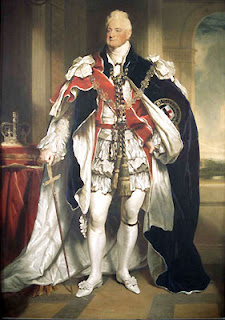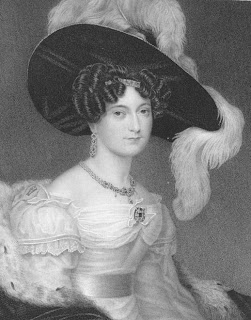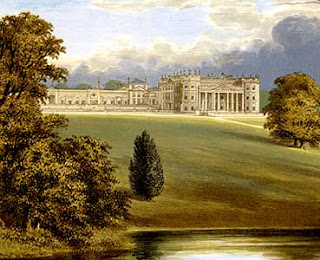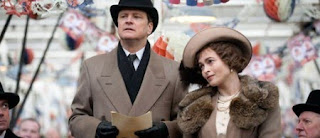COURT AND FASHIONABLE LIFE – October 1833
 |
| King William IV |
— On Sunday morning, the King and Queen, the Princess Augusta, and the Royal Suite and Household, attended Divine Service in the Chapel of the Castle. The Bishop of Worcester officiated.
In the evening Captain Ross and his nephew arrived at the Castle to pay their respects to his Majesty. They were received by the King in a very flattering and gracious manner, and had the honour of being introduced to the Queen and Royal visitors, with whom they dined and spent the evening. Captain Ross appeared in excellent health, and wore a Swedish Order.
— On Monday the King honoured the Earl and Countess of Albemarle with his company, at Hampton Court Palace. His Majesty arrived at Bushey about ten o’clock, where he was received by the Noble Earl; and after inspecting the paddocks and the Royal stud, returned to the Stud house, where his Majesty partook of a magnificent dejeuner a lafouchette. At half-past three o’clock, the King, attended by some of the distinguished visitors who were invited to meet his Majesty, visited the Palace at Hampton Court; and, at five o’clock, his Majesty returned to Windsor Castle.
— On Tuesday evening the marriage of the Hon. Mr Wellesley with the Hon. Olivia de Roos, was solemnized at Windsor Castle. The ceremony was performed by the Bishop of Worcester, assisted by the Rev. Isaac Gosset, Chaplain to their Majesties, in the private chapel, which was fitted up with crimson velvet for the occasion. There were present the King and Queen, the Duke of Wellington, Lady Sydney, Lord and Lady and Miss Cowley, Colonel and Lady and Miss de Roos, Lord and Lady Errol, Sir Herbert and Lady Taylor, and the Hon. Misses Mitchell, Johnstone, Eden, Boyle, and Bagot, Maids of Honour, and many of the Household. The bride was dressed in white satin and lace, and wore a beautiful head-dress of diamonds. His Majesty gave her away, and Lady Georgina Howe and Miss Taylor were the bridesmaids. At nine o’clock in the evening the bride and bridegroom left for Bushey; and early next week they take their departure for Germany.
-On Wednesday, tbe King, attended by Sir Herbert Taylor, arrived at St James’s Palace, for the purpose of holding a court. The following Foreign Ministers had audiences of his Majesty, viz :—The Baron Bulow, the Prussian Minister, to deliver a letter from his Sovereign; Prince Soutzo, Minister on a Special Mission from the King of Greece, to take leave ; Chevalier de Vial, the Spanish Minister, to deliver liis credentials from his new Sovereign; Marquis de Funchal and the Chevalier dc Lima, to deliver credentials from their new Sovereign. Viscount Palmerston presented Mr Addington to the King, on bis return from his mission to the Court of Madrid. Tbe King gave audiences to the Duke of Richmond, Viscount Melbourne, the Right Hon. Charles Grant, Mr Secretary Stanley, Viscount Palmerston, Sir James Graham, and Lord Hill,also to the Hanoverian Minister, Sir Lowry Cole (late Governor of the Cape of Good Hope), and Captain Woolmore.
 |
| Brighton Pavilion |
The King and Queen will leave Windsor at an early hour this morning for the Pavilion at Brighton, where a large party are invited to meet their Majesties in the evening. They will travel direct to Brighton without passing through London. Part of the Royal household have been at the Pavilion for some days making the requisite preparations for the reception of their Majesties.
— The Marchioness of Wellesley, on her way to Dublin, stayed several days at Chatsworth, on a visit to the Duke of Devonshire, who is at present surrounded by his noble relatives. The Duke, we are happy to be informed, is nearly recovered from his lameness.
— Beaudesert, in Staffordshire, the splendid seat of the Marquis of Anglesey, is now occupied by his Lordship’s eldest son, the Earl of Uxbridge, and his Countess. On the return of the Noble Marquis from his government in Ireland, and previous to his departure for Italy, he remained a few days in his pleasant and peaceful residence, Beaudesert.
— The Earl of Stair, during the winter, intends giving a series of grand entertainments at Paris, to all the British Noblesse sojourning there. His Lordship, although nearly a constant resident in the French capital, still retains his splended residence in Seamore Place, Curzon Street.
— The Hon. W. Clifford, who has recently taken possession of the mansion and estate at Irnham, near Bourne, Lincolnshire, gave a very elegant ball and supper on Wednesday to a numerous party of his tenantry.
— A very handsome guard-room for officers has just been erected in the King’s mews, north of tbe new barracks.
 |
| The Duchess of Kent |
– The Duke and Duchess of Northumberland have been entertaining large parties of noble friends at their princely Palace at Alnwick, where it is their intention to remain until after Christmas. The Duchess of Kent and the Princess Victoria some time since contemplated a visit to the Noble Duchess in the north, but the genial breezes of the Isle of Wight have so exceedingly renovated the health of the young Princess, as to occasion the Duchess of Kent to remain on the island beyond the period originally contemplated. The Royal visit to Alnwick Castle is therefore deferred until next year.
— The Earl of Egremont is, next to Royalty, the greatest benefactor Brighton ever had. Should the Chain Pier be re-instated, it will owe its restoration entirely to the Noble Earl. Nearly all the improvements in that fashionable retreat have been suggested, and in part. carried into effect, by the liberality of his Lordship, whose private charities are also unbounded.
— Lord and Lady Lyndhurst have been passing some time in Paris, where her Ladyship excited the admiration of the beau monde in that gay and spirit-stirring capital. The learned Baron and his Lady during their stay frequently dined with the British Ambassador, and they remained in Paris just long enough to bid adieu to Prince Talleyrand and the Duchess de Dino, previously to their departure for the south of France.
— The Duke and Duchess of St Albans have returned to their house in Piccadilly after a very long provincial tour, where in every town they visited, her Grace substantially patronized the theatre if there were one. They will shortly depart for Brighton for the winter, where they will resume their capacious house in Regency Square.
— The amiable Countess of Clare and her suite have again departed for the Continent, where they will remain until the spring of next year, unless news from her lord in India should occasion her Ladyship to return.
 |
| Hatfield House |
- Marquess and Marchioness of Salisbury, during the last fortnight, have been entertaining in succession large parties of the nobility at their mansion at Hatfield, one of the most splendid in that part of the country. The Noble Marquess will shortly review, on his own princely domain, the Hertfordshire Yeomanry, on which occasion the Duke of Wellington, and several of the Duke’s military friends and ‘companions in arms,’ will likewise be present, to participate in the general and most unbounded hospitality which pervades Hatfield House at this annual festival. Lord and Lady Dacre, Lord Verulam, Lord Grimstone, and most of the opulent and distinguished neighbours are also invited
— Chantrey the Sculptor is at present engaged on a professional tour in the north. He has received instructions from the Dowager Viscountess Downe, to execute a full-length statue of her deeply lamented Lord, which is intended to be placed in Snaith Church, Yorkshire. The figure will be taken from a picture painted by Sir Thomas Lawrence, in which Lord Downe is represented in his parliamentary robes.
— The Duke and Duchess of Argyll will occupy a house at Brighton, in order to be near their Majesties, with whom his Grace is an especial favourite.
 |
| Bowood House |
- The Marquis and Marchioness of Lansdowne have been entertaining a large party of fashionables at Bowwood Park. We understand that, if the state of public business will permit, his Lordship and family will pay their annual visit to Paris before Christmas.
— Lord Delamere has been entertaining a large party of fashionables, at his seat, Vale Royal, Cheshire, to celebrate the coming of age of his Lordship’s eldest son, the Hon. Hugh Cholmondeley, late of the 1st Life Guards.
— The Marquis and Marchioness of Conyngham are now in possession of the large mansion, in Park lane, built by the late Earl Dudley, from whose executors it was purchased by Lord Conyngham. We believe the Noble Marquis first intended to take the wine, which was valued at two thousand pounds; but this his Lordship has subsequently relinquished. The entire house has been newly-embellished, under the good taste and direction of the Marchioness of Couyngham.
— The Duke of Devonshire, the Marquis of Bristol, and the Marchioness and the Ladies Cornwallis, are the only distinguished personages that at present occupy houses at Kemp-town, near Brighton. The keen air of the west cliff is better suited for a summer than a winter residence.
— A happy family party, consisting of the Marquis and Marchioness of Ailesbury, Lady Laura Tollemache, Hon. Charles and Mrs Tollemache, and Miss Tollemache, are assembled under the roof of the excellent Countess of Dysart, and enjoying her hospitalities, enlivened occasionally by the visits of the surrounding neighbourhood.
— Few persons went to the last levee with greater magnificence than the Portuguese Ambassador, the Marquis of Funchal, and the Charge d’Affaires, M. de Lima. The liveries of the Marquis were nearly covered with silver lace. The reception of these gentlemen by the King was highly gratifying; his Majesty conversed with them for some time, and enquired particularly after the health of his ‘ little favourite,” Donna Maria, and the Duchess of Braganza. His Majesty said he was rejoiced to hear of the continued success of the constitutionalists, and hoped that the contest would be soon over.
— Lord Yarborough has arrived at his seat, Brocklesby, for the burning season.
— It was the intention of the King and Queen of Belgium to visit Claremont this year, but they have been prevented. As the Queen, however, is very desirous of spending two or three weeks, the King will probably bring her over next Spring. The improvements in the Royal gardens and grounds in Belgium are proceding rapidly, under the superintendance of the King’s Conservator, Mr Mackintosh.
— The Duchess de Dino, since her departure, has written to several of her distinguished friend, to say that she expects to return to London early in January, accompanied by her daughter.
— The Duke of Grafton has been entertaining a party of his sporting friends with a grand latte, at his magnificent set, Euston Hall, near Timford. Amongst his Grace’s distinguished guests are the Marquis of Exeter, Count Matuscberiu, the Earl of Chesterfield, the Earl of Stradbroose, Lord C. Fitzroy, Hon. Colonel Anson, &c.
— Earl and Countess Grey and family are still remaining at Howick, and no day has yet been named for their return to Downing Street.




























